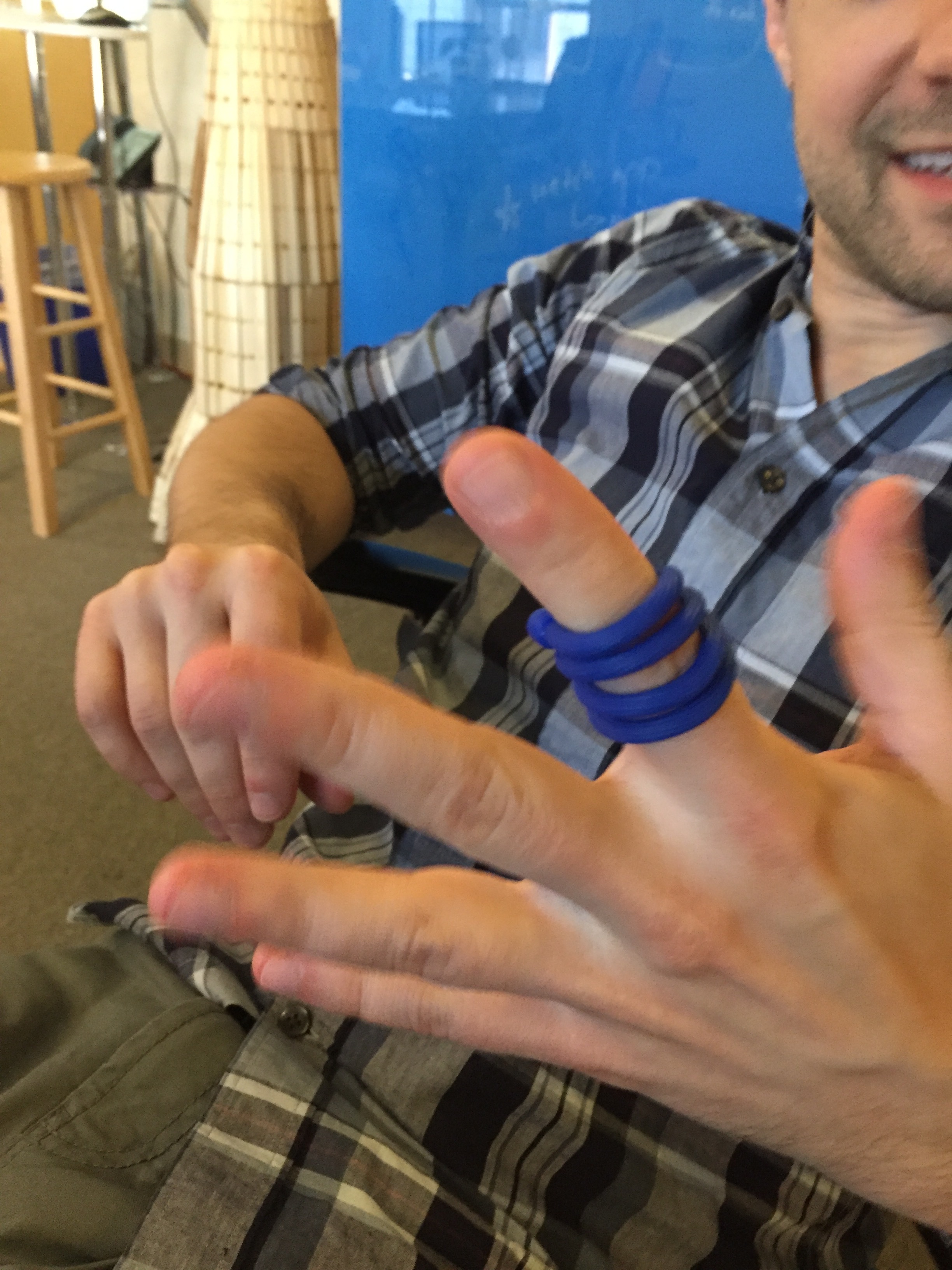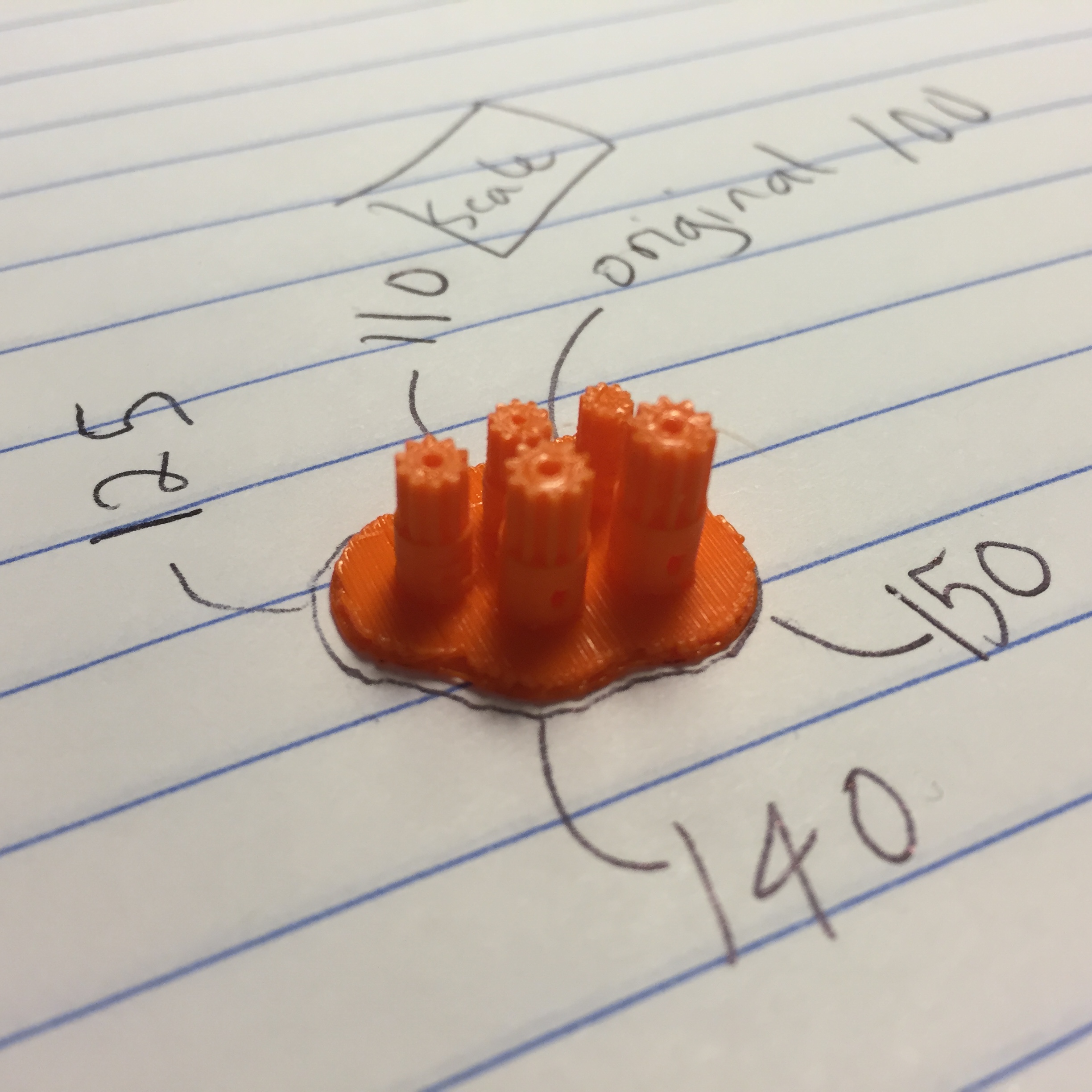Novel Interaction Techniques for Wearables
Project
Computer Science honors thesis
focus
HCI design/development/research writing
Time
fall 15/spring 16
With Professor Yang's support in the Computer Science department at Dartmouth College, I started the thesis research process this fall and it has been lots of fun so far! I have gone about my career thus far primarily relying on what my group has been able to accomplish but I wanted to do something for me where I was the only one responsible for every success and also every failure. It has been a huge learning process in terms of my knowledge of the HCI process/field but an even bigger learning process for myself. It is exciting to discover the possible intersections I could fall into as a designer, researcher, and computer scientist.
The area of HCI primarily covers: significantly novel enabling technologies such as innovative input devices, new interaction techniques, and new media that extend the boundaries of traditional interaction, such as natural user interfaces, augmented reality, mobile interaction, haptics, and tactile interfaces, ubiquitous computing (including wearables), social software, and computer-supported collaborative work. Furthermore, the area tries to focus on: novel interactive hardware prototypes, prototype fabrication methods or tools, or processes for creating user experiences that involve physical devices, sensors, prototypes, or systems.
This project has been my baby for the past year and I love it dearly; every painful night and exciting discovery.
Timeline
Fall 2015 - Research and Ideation
January/February 2016 - 3D Prototyping
March 3rd, 2016 - Ring Prototyping Complete
March 10th, 2016 - Brainstorm Interaction Techniques and User Scenarios
March 31st, 2016 - User Study of Implemented Wearable
April 6th, 2016 - Create Video
April 13th, 2016 - Final Paper Write-Up Due for CHI Submission
Research
In exploring the area of Human-Computer Interaction (HCI) for my senior undergraduate thesis in Computer Science, I was able to teach myself a lot about an area that I have always found fascinating.
Need Finding
The area of HCI is a new field that is evolving every day to stay ahead of where technology is today and figure out how people will integrate technology into their lives tomorrow.
Survey
With the help of my thesis advisor and my sorority sisters, we dispersed a Mechanical Turk Survey inquiring about the habits of ring wearers.
The results have not been released yet but it has been providing lots of insights between human behavior with rings and how they could be used for more natural human-computer interaction with rings as the interface.
Key INSIGHTS
Input vs. Output: information is input by users like when tapping on a screen and users are informed by output like when your phone vibrates. Inputs have been heavily explored in the literature but there has been a minimal exploration of output techniques which leads to an excellent design space to tackle.
Types of Touch: Tactile (contact location, pressure, shear, slip, vibration, temperature) and Kinesthetic (position, orientation, force)
Why a Ring: fingers super-sensitivity, rings are already acceptedly worn
Computational Jewelry: 2012 was a significant spike in computation jewelry creation. 40% of computational jewelry is to be worn as bracelets or bands. 69% of devices tested utilized Bluetooth technology. (2015 Cog Sci paper)
Primary reseaRch reference Articles
Nod gesture control ring
PneUI Shape-Changing Interfaces from MIT Media Lab
LineFORM from MIT Tangible lab
Ringly jewelry technology
uniMorph from MIT Tangible lab
Cord UIs from MIT Tangible Lab
Wrigglo Shape-Changing from KAIST
Petit Protection ring gun - 1800s functional ring
MISSION
Design novel interaction techniques for input and output of information with wearables. (As this was a research project and not a product, the mission and need were really to advance HCI innovation and discoveries.)
Fall 2015 - Ideation
Armed with months of research, pipe cleaners, sketchbook, and excitement I sat down multiple times a week to see how crazy my ideas could get. From each of those idea sessions, I would see what rough prototypes I could test out on myself and give to others for feedback. The ideas kept flowing all throughout the project but the timeline was closely checked to keep in mind how much progress could be made on every idea.
What is the most intuitive way to interact with a device on your finger? What sorts of input and output of information would come from these interactions? How might each interaction be implemented?
January/Febuary 2016 - Prototyping
spent many a late night with Roboxy the printer :)
first rough sketch of product specs
testing very small motor and its spinning!
Early prototyping
With all the ideas from the fall, I went to work making quick and disposable models of my ideas with the lab’s handy 3D printer. Being someone that had never really used a 3D printer before, it was exciting to teach myself and troubleshoot on seven different printers (of varying printing methods) from around Dartmouth's campus. I was continually testing varying designs with all very different interactions and sensors. In the end, based on feedback from advisors and the need to stick with our timeline we settled on three-ring designs to create and test with users.
final prototyping
I cast the final prototypes in silver which was very exciting to learn and eventually get to keep the beauties! Check out the casting process below!
Product Specs
Because this project is still under review I can not publicly share specifics but would be happy to show you upon request!
March 2016 - Functional Ring and Testing
functional prototype
After casting the silver ring twice I had a ring perfectly sized to a size 8.5, the world average for both genders, which we could put to the test with some users.
User Testing
As this was a human-computer interaction research project, there was a large need to come up with user scenarios and test how users would interact with the device. We had 12 users with 6 females ranging from age 18-37 with varying technical competency which we gave four use cases to interact with and provide feedback on their experiences in a questionnaire.




































